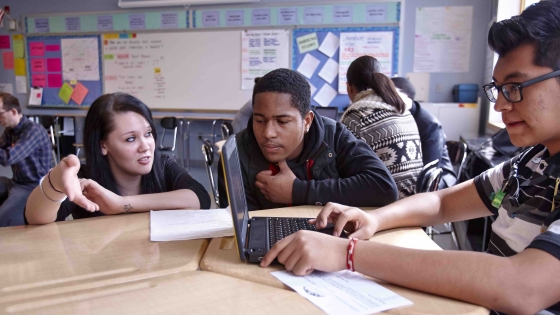Reimagining Equity in Our Work
February 2024
In my last post, I described one of the Research Alliance’s two primary focuses: Improving evidence use. Now, I turn to our commitment to embedding equity throughout our work.
Why Center Equity and Racial Justice? Advancing equity has always been a fundamental part of the Research Alliance's mission. There are several reasons why we have committed to more consciously infusing equity and racial justice into every phase of our work. First, while we’ve seen improvement on a broad range of outcomes for NYC students over the last few decades, deep inequities persist and disproportionately affect our Black and Latinx students and families. Mirroring the situation in other cities across the country, there are large gaps in students’ educational opportunities, experiences, and outcomes rooted in longstanding structural racism and economic inequality. The COVID-19 pandemic exacerbated these inequities, underscoring the urgency of addressing them. Second, and relatedly, understanding the historical and systemic dimensions of the topics we study is crucial for informing meaningful change (see Gamoran, 2021). Examining how community context and systems outside of schools influence educational opportunities and outcomes enables us to develop more comprehensive and effective strategies for promoting student success. The Research Alliance has begun to implement and support work in this area, including studies of homelessness among elementary students, school segregation, and the educational impact of aggressive neighborhood policing.
A third motivation centers on amplifying the voices, perspectives, knowledge, and experiences of the students, families, and communities we serve (see Warren et al., 2018). Historically, these voices have been marginalized in education research and policy. As a result, research agendas have not always been relevant to and aligned with the values and needs of the community, and they have suffered from an incomplete grasp of local challenges and potential solutions. Elevating these perspectives contributes to research that better reflects the realities of communities and informs policies and practices that are more responsive to their needs. Finally, we believe an equity-centered approach is necessary to address the power dynamic between researchers and the communities being researched. Chicago and Beyond’s work (2019) has shown how research design and implementation can inadvertently perpetuate biases and power imbalances.
How Will We Infuse Equity Throughout the Research Alliance’s Work? We are actively developing strategies to incorporate an equity and racial justice orientation into both the substance and process of our work. In terms of substance, our focus is on understanding and disrupting the root causes of disparities in outcomes. This includes more attention to students’ access to key resources and opportunities, both in and outside the classroom. We bring a critical quantitative lens and intersectional approach in our analyses that not only uncover disparities stemming from systemic and structural oppression, but also acknowledge and highlight diversity within groups. We strive to contextualize findings to avoid deficit framing of historically marginalized students. We also work with our partners at NYCPS and elsewhere to develop and test interventions explicitly aimed at reducing educational inequality. We strongly believe that information about disparities is only useful if it inspires action to help solve the problems that have been identified.
In terms of process, we are committed to addressing power imbalances that often make research less responsive and relevant to the needs of marginalized communities, and diminish the usefulness and impact of research evidence (e.g., see Doucet, 2019 and Kirkland, 2019). One way we do this is by centering the insights of research, practice, and community partners who have the lived experience of being impacted by systems of oppression that are at the root of injustices marginalized students experience. We have created structures to engage with schools and communities throughout the research process, such as youth advisory councils and community-based working groups. This enables us to obtain input and advice on a range of important issues, from the genesis of research questions (e.g., whose voices and perspectives inform our agenda? whose work are we citing and building upon?) to the implementation of projects (e.g., how are we engaging communities in research activities?) and the communication of findings (e.g., who do we see as the key “audiences” for our work?).
As we strive to implement and improve these strategies for advancing equity, we welcome your suggestions, thoughts, and guidance. What successful approaches have you discovered for centering equity and racial justice? Additionally, what challenges and risks should we be mindful of, and how can we navigate them effectively? Reach out to us through LinkedIn, Instagram, X (formerly Twitter), or email at research.alliance@nyu.edu.
We look forward to hearing from you!
Sincerely,
Cheri Fancsali
